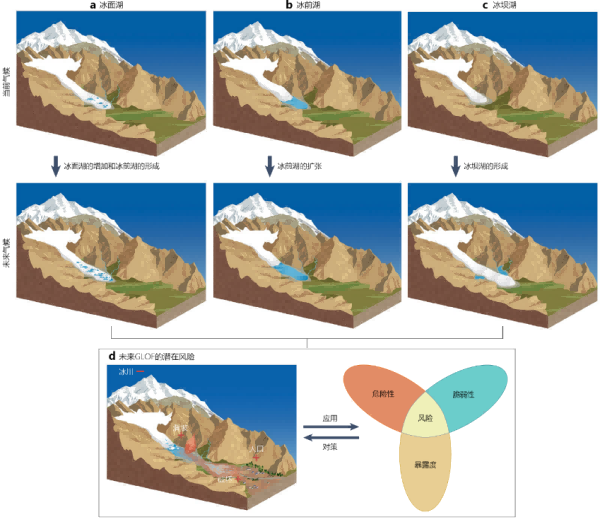Against the backdrop of global warming, glaciers are accelerating their melting and retreat. When glacial meltwater is blocked by glaciers, moraines, or bedrock, glacial lakes form before, at the edge of, on the surface of, within, or beneath the ice. And glacial lakes can cause glacial lake outburst floods (GLOFs). It is crucial to conduct comprehensive research on the global geographical distribution, formation time, evolution process, and physical characteristics of glacial lakes in order to alleviate GLOF damage in downstream areas. Previous studies on glacial lakes have either focused on specific types of glacial lakes or only on specific mountainous areas, lacking global research on the characteristics and changes of glacial lakes and GLOFs.
Zhang Guoqing, a researcher in the Environmental Change and Multilayer Process Team of the Institute of Tibetan Plateau Research of the Chinese Academy of Sciences, and together with scientists from Britain, Austria, Canada, Switzerland, Germany and other countries, comprehensively analyzed the global ice lakes of different sizes and types and historical GLOF events, constructed a global ice lake dataset, clarified the geographical distribution, regional characteristics, change patterns, and causes and mechanisms of global ice lakes, quantified the proportion of different types of GLOF in the world and historical trends, estimated the disaster risks and response measures of global ice lakes and GLOFs in the future, and proposed future research directions such as developing new technologies and methods for ice lake monitoring and risk assessment, obtaining global ice lake cataloguing and field observation data, and improving Flood dynamic model.
Research has found significant regional differences in the number, area, and volume of glacial lakes worldwide. Meanwhile, research estimates that the overall risk of global GLOF will increase in the future, but there are regional differences.
On May 21st, the related research results were published online in the Nature Reviews Earth&Environment, titled Characteristics and changes of global lakes and outbound flows. The research work has been supported by the National Natural Science Foundation of China's "Basic Science Center for the Earth System of the Qinghai Tibet Plateau" project and the Second Comprehensive Scientific Expedition to the Qinghai Tibet Plateau.
Paper link

The Future Formation and Expansion of Ice Lakes and GLOF Risks




